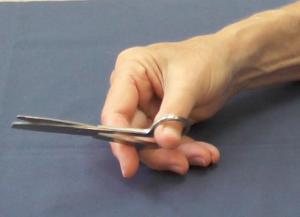The Art of Paper Cutting: Mastering Scissor Skills
Table of Contents
The Basics of Scissor Cutting
Children often find themselves faced with the task of cutting paper using scissors. While cutting along a straight line is relatively simple, cutting angled lines and curves require more sensorimotor control to achieve the desired outcome.
The Essential Actions of Scissor Cutting
Cutting paper with scissors involves a coordinated effort between the hand holding the scissors and the hand holding the paper. Here are the key actions:
The hand holding the scissors:
- Grasps the scissors in a way that allows the thumb and fingers to open and close the blades.
- Repeatedly opens and closes the blades to produce a clean cut.
- Aligns the blades at right angles to the paper for a clean cut.
The hand holding the paper:
- Grasps and positions the paper relative to the scissors, ensuring that closing the blades results in a cut in the desired direction.
- Repositions the hand on the paper to change its position relative to the scissor blades.
The Dynamic Coordination between Hands
Cutting with scissors requires seamless coordination between the actions of both hands. When cutting along a straight line, the cutting and supporting hands interact in a simple manner. The paper remains steady, held at a right angle to the scissors, while the cutting hand moves the blades forward to produce a series of straight cuts.
However, if the blades are not aligned correctly, the paper may slip. This is particularly common with children’s craft scissors that tend to be slightly loose and not very sharp. When cutting angled lines or curves, the hands adjust their relative positions to align the blades correctly. Wrist and shoulder movements may also be involved, depending on the size of the paper and the angle of the line.
Cutting along Narrow Paper Strips
Cutting small pieces from a narrow strip of paper showcases the dynamic interaction between the two hands. The supporting hand may be repositioned as the cutting hand moves along the strip. Alternatively, the blades of the scissors can hold the paper steady while cutting.

Video Clip: Cutting Straight Lines
In this video clip, you can observe the seamless coordination between the two hands as I cut along straight lines. The strip of card is supported by my cutting hand when repositioning my supporting hand. The movements of the hands work together dynamically to achieve the desired outcome.
Efficient Motor Planning for Shoulder-Forearm-Wrist Coordination
Individuals with good cutting abilities, both children and adults, position the paper so that the cutting line aligns with the mid-sagittal plane of the body. This allows the hands to be positioned comfortably close to the midline, facing each other. Efficient coordination between the shoulder, elbow, forearm, and wrist is crucial for precise scissor and paper alignment.
Grasping the Scissors
Standard scissors have two loops for the thumb and fingers. The thumb is inserted into the smaller top loop, while the index finger often rests on the outside ring of the bottom loop. This positioning is believed to provide stability, although there is little evidence to support this assumption. The bottom loop can accommodate one or more fingers, depending on the scissor size.

Finger Movements for Blade Control
Coordinated thumb and finger movements open and close the blades of the scissors. When the blades are fully open, the thumb is extended. Closing the blades is achieved by flexing the thumb at the metacarpophalangeal (MCP) joint. The bottom loop is moved by flexing the MCP joints of the fingers inserted into it.
Shoulder and Wrist Movement Coordination
Individuals with good cutting abilities demonstrate effective interaction between shoulder and elbow movements and forearm and wrist movements. For most tasks, the upper arm remains close to the body, and the hands are brought to the midline by twisting the shoulders inward (medial rotation). The elbows are flexed, and the forearms are twisted to face each other, while wrist flexion allows for adjustments in paper and blade alignment.
Practice Makes Perfect
With practice, shoulder, elbow, and wrist movements become more efficient as individuals learn to use wrist movements to align the scissors and paper. Younger children tend to rely on shoulder movements to align the scissors and paper, resulting in less precise cuts.
Video Clips: Cutting Skills in Action
Take a look at these video clips showcasing different children’s cutting techniques and progress:
- Will (2 years old) demonstrates various cutting components that need to be mastered and integrated into coordinated hand movements.
- Max (4 years, 6 months) exhibits developing cutting skills, although he relies on changing the scissor blade direction instead of adjusting the paper position.
- Rona (8 years) showcases fast cutting but lacks precision.
- Will (7 years) cuts along short lines with improved technique and precision.
Remember, like any skill, cutting with scissors becomes more efficient with practice and the honing of motor coordination.
To learn more about improving your scissor skills, visit Quill And Fox.
